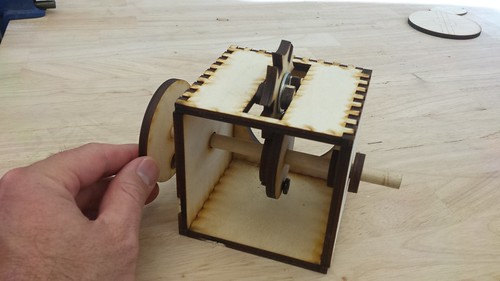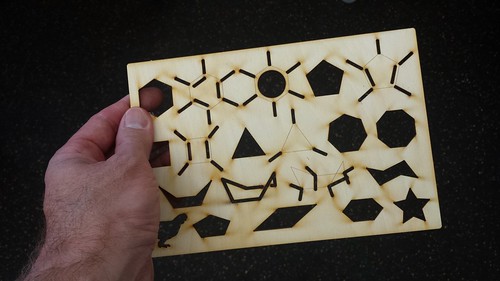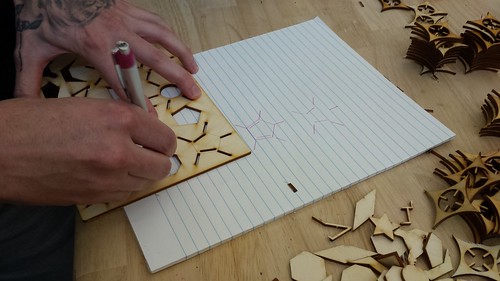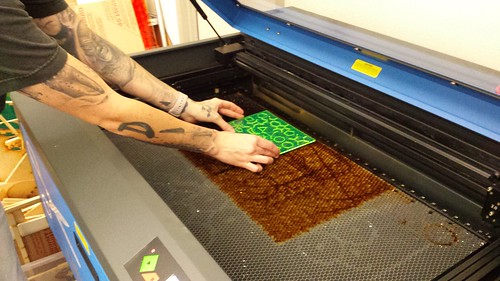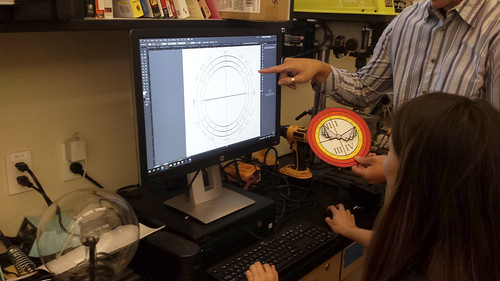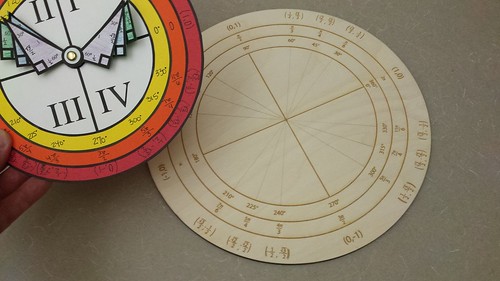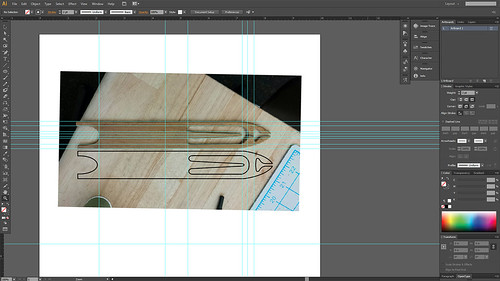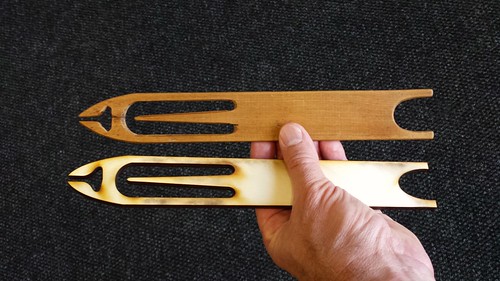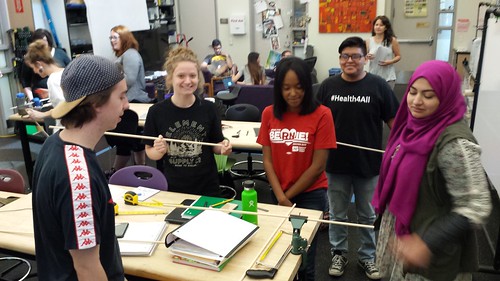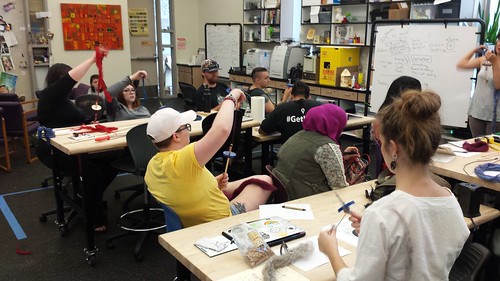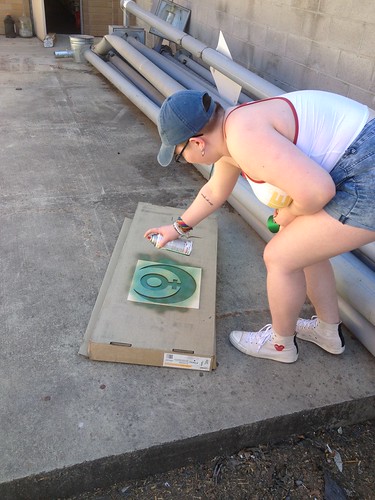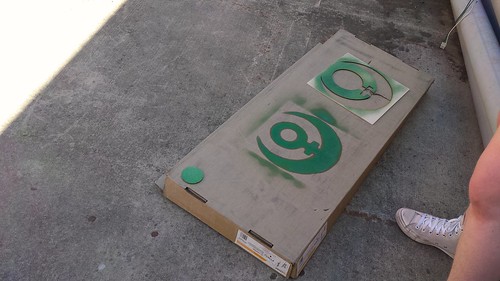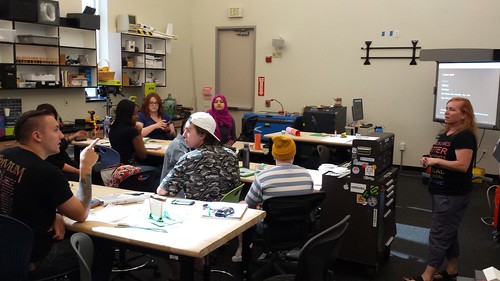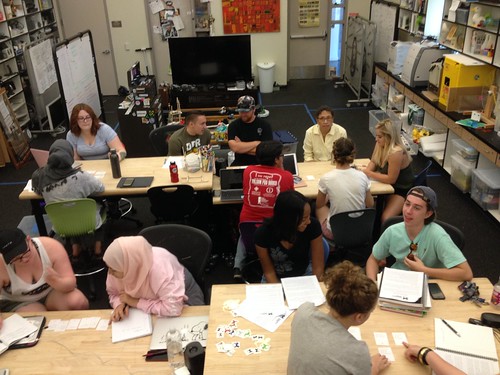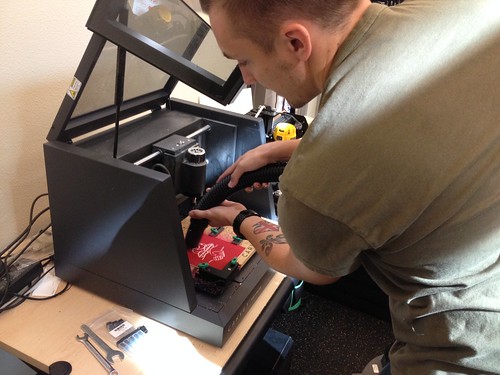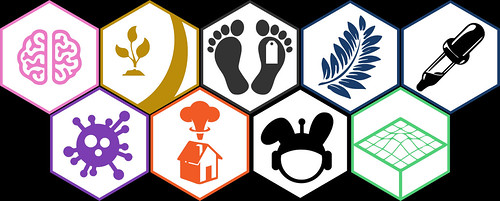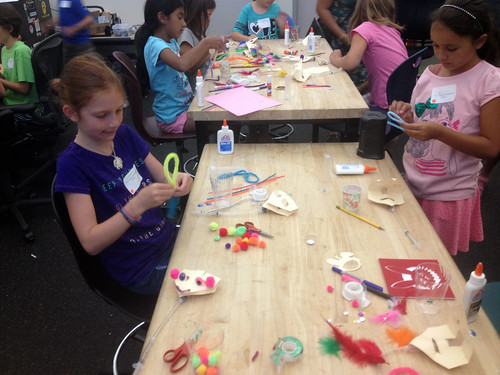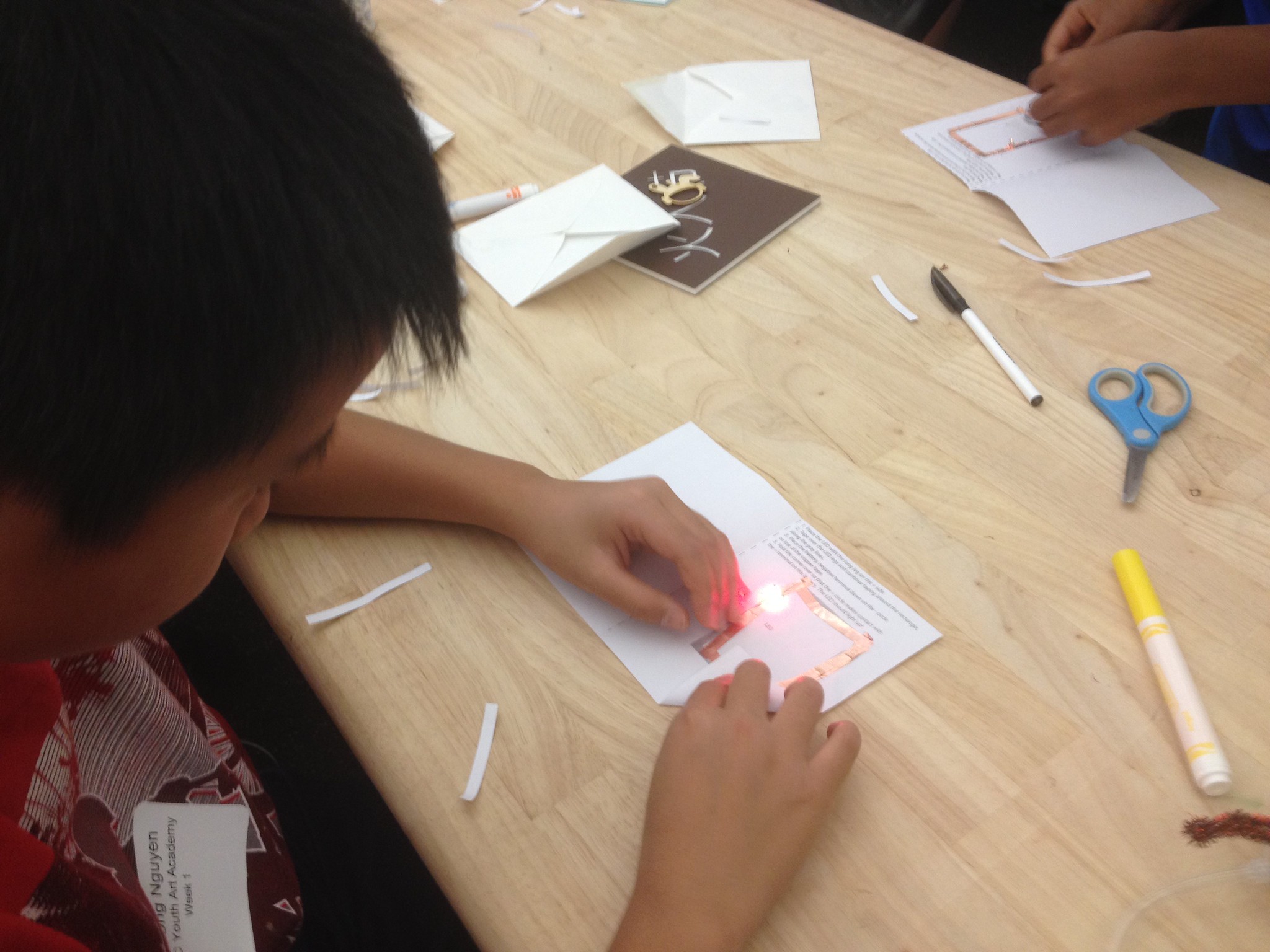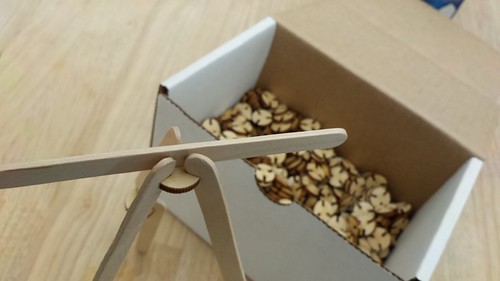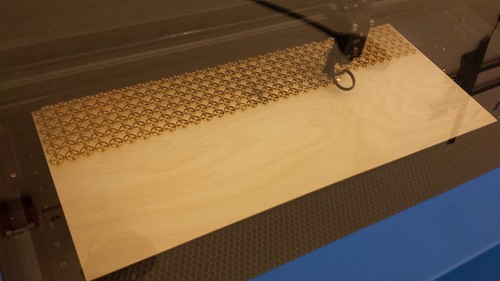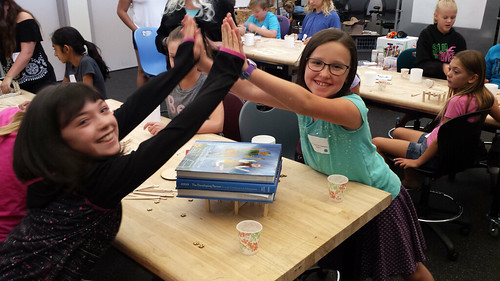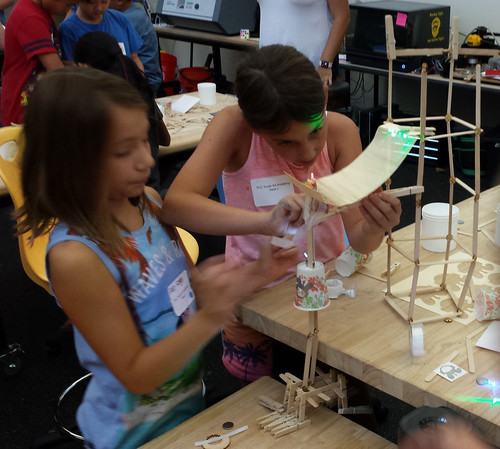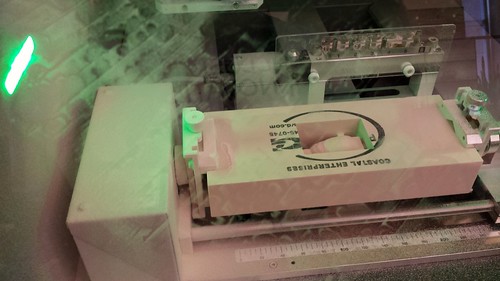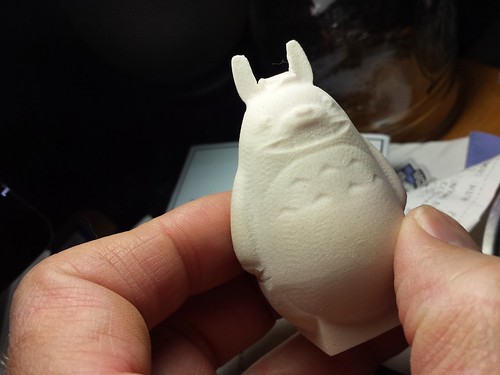Max Mahoney (Chemistry) and I worked on a mechanical automata project this morning. Our long-term goal is to create laser cut wooden versions of the various mechanical mechanism building blocks in the beautiful book Karakuri: How to Make Mechanical Paper Models that Move by Keisuke Saka. To get a sense of what the design and development considerations might be, we decided to start with a Thingiverse search, and found Simple Machines – Geneva Stop (CC BY-NC-SA) by Zombie Cat. A few minor adjustments to the layout, and we cut the parts out of 1/4″(ish) hobby plywood. We ended up having to tweak a few of the parts to fit the dowels we had on hand, and we made a few slight modifications to the design based on the differences between the vector files and the thickness of our plywood, but overall it’s a great design and turned out pretty well for our first automata.
The rest of the afternoon was spent working with Nicole (student and Innovation Center staffer) on a stencil for organic chemistry. Max hung around finishing the automata, and answered a few technical questions as Nicole and I worked through the layout in Illustrator. We tested the first prototype, and decided that the various cut-outs representing the bonds needed to be scaled up a bit. Below is version 2, including Nicole’s beloved chicken in the lower left hand corner, and a fancy star on the right.
Test stenciling…
The design finished and tested, we cut the final version out of acrylic. Success!
The file is up on Thingiverse, or you can just grab the PDF if you’d like to cut your own.

